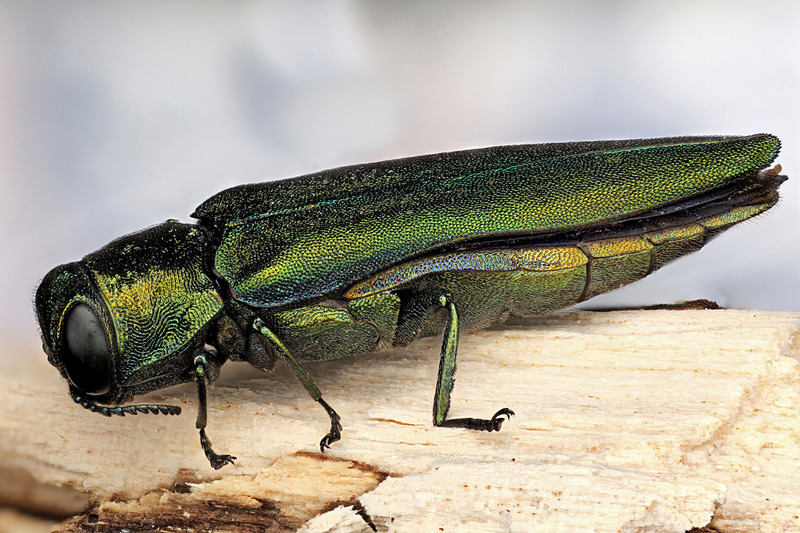The Local newsletter is your free, daily guide to life in Colorado. For locals, by locals.
The bad news: An invasion is inevitable. Even worse, more than 330,000 potential victims have already been identified in the Mile High City. The good news: We have Rob Davis, Denver’s city forester, on our side.
“I’ve been watching the emerald ash borer [EAB] since it showed up in Michigan in 2000,” says Davis, a lifelong Coloradan. “The thing I’ve learned is that if you wait for it to show up, you don’t stand a chance. It moves so quickly you’ve already set yourself behind.”

The insects, which are about the size of a penny, lay eggs inside ash tree trunks. The larvae then tunnel underneath the bark, ultimately killing the tree. In terms of its aggression, Davis rates it a 10 out of 10. Infestations across North America have already done billions of dollars in damage—and unfortunately, by the time you see the EAB, the harm has begun. Since the EAB is already present in Boulder and Longmont, Davis says it’s just a matter of time untill the critters make their way to Denver, likely hitchhiking on firewood or landscape debris.
That’s why, with the support of Mayor Michael Hancock, Davis and the Denver Parks and Recreation Department have developed a multipronged, proactive approach to protect Denver’s ash population. Their Be A Smart Ash public awareness campaign may have a cheeky name, but the potential consequences of the EAB are no joke: There are an estimated 1.45 million ash trees in the metro area and 330,000 in Denver proper.
Thankfully, tree trunk injections are 90 percent effective in fighting EAB. The city recently conducted a massive tree inventory and began a three-tiered plan for protecting the 30,000 ash trees on public property. One-third of the public ash trees have already been treated, with the remaining trees slated for attention in 2017 and 2018. You’ve probably already seen trees banded with the white ribbons and tags that note EAB treatment, and as you’re appreciating the metro area’s lovely fall foliage, Davis says, it’s the perfect time to identify your own trees—homeowners are responsible for treating the remaining 300,000 trees located on private property—and create a defense plan.
An interactive map on the Be A Smart Ash website clearly identifies every tree on street-side public right-of-way areas. Plug in your address to see what’s planted on your curb. Ash trees and their treatment plans are highlighted on the map in yellow; ash trees on private property are also highlighted. Davis says homeowners with inventoried ash trees will receive information from the city on treating their trees in the coming weeks.
“We are asking people to educate themselves on what trees they have and to consider treatment,” Davis says. For example, it makes sense to treat an older, shade-producing tree, but smaller, younger trees could be candidates for replacement.
Finally, given the inevitability of some kind of damage, the city has prepared to replace thousands of street-side trees. Residents can apply for a free tree now, and the city will plant on right-of-ways into October, weather permitting. Additional trees will be available by request come spring.
Even with all these careful preparations (Davis says he believes Denver is the nation’s best-prepared metropolis for the EAB arrival), residents will see our 100-year-old tree canopy wounded by the insect. It’s a bitter pill for a city forester to swallow, especially given the fact that the EAB seemed pretty well contained to the Midwest several years ago. Davis thinks the insect likely arrived in Colorado thanks to a camping trip, probably when someone from Kansas or Illinois decided to cut down a dead tree in their yard to use as firewood.
“I look around at our tree canopy that was planted by people who lived in Denver 100 years ago and think about all the care that has gone into our city’s trees,” says Davis. “And to think it’s in jeopardy because of one mistransported tree from the Midwest—it’s sad. It’s a depressing thing. I mean, firewood is really cheap.”








